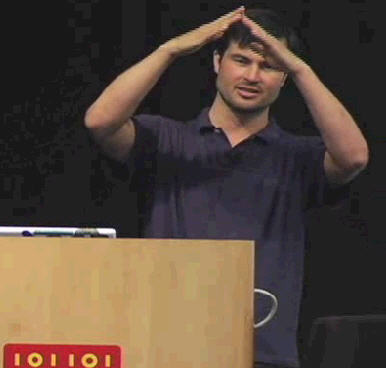From Mashup University: Video of Introduction to Mashups 101

ZDNet was the official media partner to Mashup University which took place at the Computer History Museum this past July and since then, our broadband team as been pioneering the intersection of on-demand distance learning by way of highly post-produced Webcast lessons that brilliantly merge the video output of the teachers' computers, the video of the teachers in front of the classroom, and a single audio stream. Here is an earlier post regarding our promise to get these online in streaming format (along with a photo of ZDNet's camera crew at the museum, preparing to tape the lessons).
In most distance learning situations where the "school" has more control over the technology that's used to capture the lessons (eg: the computers and the software that works on them), this wouldn't be so problematic. But, in the case of Mashup University where there were 22 distinctly separate teachers each of whom gave their own lessons with their own computers, we couldn't ask each teacher to load special recording software onto their computers. We needed something that was far more passive, but that could also capture what was happening on the teacher's computer with an image quality where the text on the screen is easy to see in the final production (in other words, you can't point a video camera at big screen). After all, if we're publishing these videos with distance learning in mind, and there's programming code involved -- code that would be software developers will want to see -- we needed to guarantee the visibility of the code.
As you can imagine would be the case in any teaching scenario involving programming, there are times where nothing is changing on the screen and the teacher simply talking about methods and concepts. To liven things up as much as possible, we wanted the flexibility to cut away from the screen to a visual of the teacher, and then the ability to cut back to the screen once things changed there.
To intercept the output from each presenters computer, we used an black-box like appliance that captures the output from an VGA port and turns it into a video (without interfering with that VGA port's ability to connect to an overhead projector). The device we used is Epiphan’s $4,000 VGA Recorder.
This first finished on-demand lesson is Mashup U's Introduction to Mashups 101. The object of the lesson was to give students, some of whom have never programmed before, an idea of what mashups are and how they are developed. The instructor (pictured below) is Brian Hamlin. As the other lessons become available in a streaming format, I'll post the summaries here.
